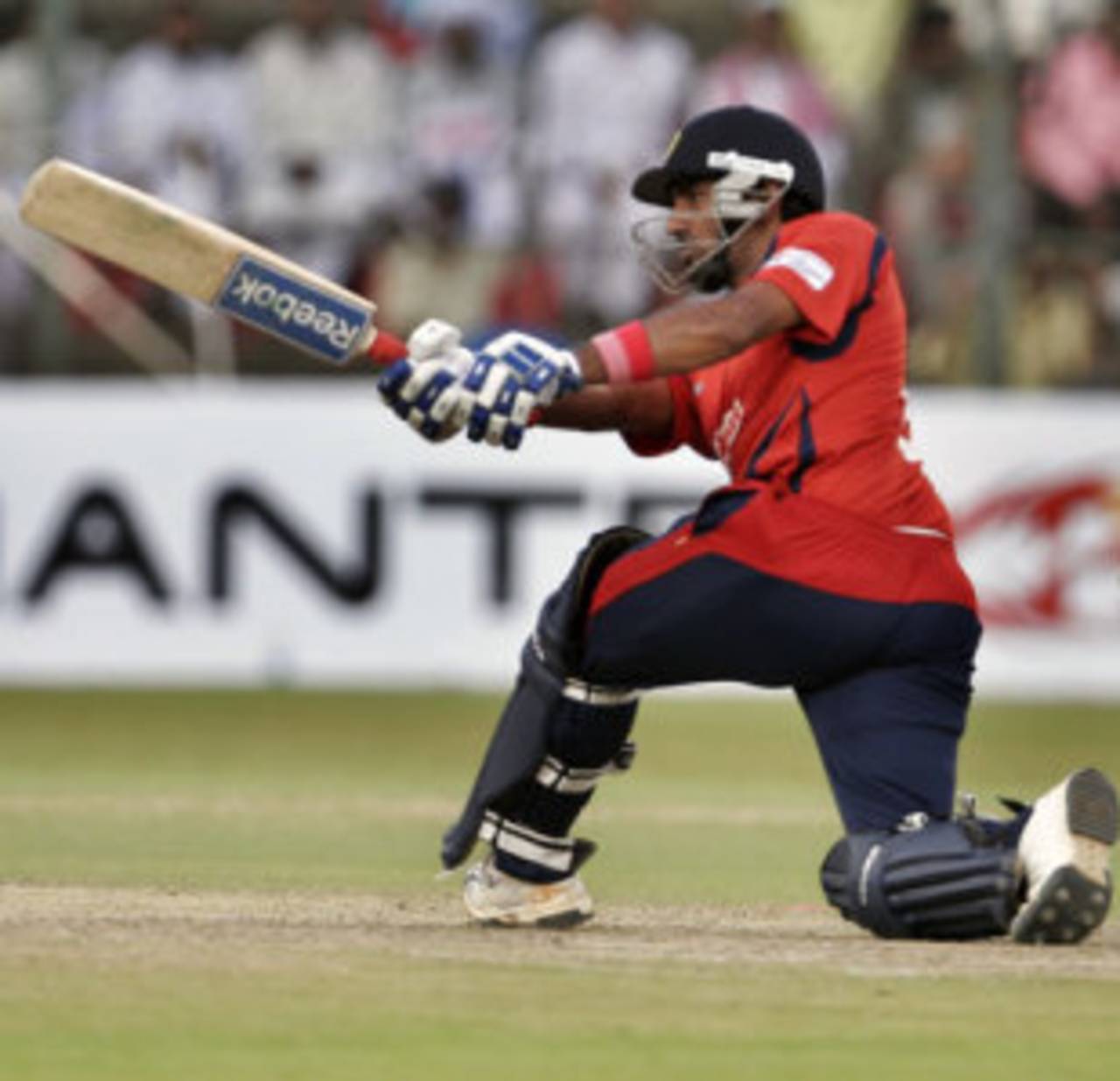All batsmen hit the ball to score runs but some build their games around hitting big and hard. Robin Uthappa belongs to that category, while Jacques Kallis looks to find a balance between aggression and defence. I am not a big hitter, so I watch in awe when someone like Uthappa or Yusuf Pathan goes berserk.
But there is more to hitting the ball hard and far than just whacking a white round object thrown your way. There are different ways to hit the ball and this is my attempt at break down the method behind the madness. (Though it would have been better if I had cracked it while I played for India.)
Momentum
To play fast bowlers behind the wicket, you can use the pace of the ball to good effect. But if you want to hit them down the ground it's almost like playing against spinners: you'll need to generate some pace of your own. In other words, momentum, which can be achieved in different ways.
The back-lift: The higher the back-lift, the harder the impact of bat on ball. That's why we see players like Yuvraj Singh and Virender Sehwag hitting further than the rest without really trying to knock the leather off the ball. To get the bat to come down at the right time, they need to either initiate the downswing early or increase the bat speed; but those are small adjustments to gain the extra yards. Many Australian batsmen, like Ricky Ponting, cock their wrists at the highest point of the back-lift to get the bat higher, and then unwind at the point of impact. That increases the back-lift and the bat speed.
Use your feet: Most batsmen prefer this to adjusting their back-lifts. The objective here is to throw the weight of the body behind the shot at the point of impact. It's common to step out of the crease against the spinners - Sourav Ganguly does it really well, especially against left-arm spinners - but these days many batsmen successfully do it against fast bowlers as well.
Timing
Players like Sachin Tendulkar are blessed with this gift. They don't need high back-lifts to send the ball speeding down the ground or careening through the air. The trick is to meet the ball at the right point of the downswing and then transfer the weight from one foot to another at the point of impact. It's as complicated as it sounds and that's why a lot of good batsmen spend their careers searching for this elusive skill. And it's why less-accomplished batsmen, despite high back-lifts and powerful arms, rarely manage to clear the fence.
Maintaining shape
Hitting a long ball on a regular basis is as technical as playing a cover drive. While the back-lift and downswing are important, the shape a batsman maintains during and after the shot is equally important. Uthappa is a good example: he keeps his head still and maintains a stable base and good shape, during and after the shot. No wonder he's one of the biggest hitters of the ball. The follow-through, a by-product of a good downswing, is just as important. The arms should follow the line of the shot and not fall away.
Hitting a long ball on a regular basis is as technical as playing a cover drive. While the back-lift and downswing are important, the shape a batsman maintains during and after the shot is equally important. Uthappa is a good example: he keeps his head still and maintains a stable base and good shape
Free your arms
You must have room to swing your arms freely. Bowlers will try to eliminate this space by pitching it straight, and batsmen respond by clearing the front leg to create the necessary room - Suresh Raina does it to hit the ball in the midwicket area - or by going deep inside the crease to get under balls that are pitched up. MS Dhoni is really good at getting under the ball and that's why he manages to hit yorkers with ease.
If you want to hit in the air, there are some more things to keep in mind.
When you step out, you mustn't get close and over the ball but stay slightly away to get under it.
While playing a grounded shot, the impact with the ball occurs during the downswing, with the face of the bat tilted slightly towards the ground. When you play a lofted shot, you hit the ball when the bat is facing upwards. In theory the lofted shot is an extension of the one played on the ground, but there's more to it; only a few players, like Matthew Hayden, can hit the quicker bowlers down the ground by simply extending and elevating the straight drive.
That's one difference between Hayden and Uthappa. While Hayden hits them with a straight bat, Uthappa hits with a horizontal bat. The straight bat is a safer option because there's more room for error if you misread the bounce. By choosing horizontal strokes Uthappa risks missing or edging the ball if it bounces more or less than he anticipated.
We have come a long way from the time when hitting sixes was a synonym for slogging. Hitting sixes on a regular basis is an art only a few have mastered. And those few are worth their weight in gold, especially in the Twenty20 format.
Former India opener Aakash Chopra is the author of Beyond the Blues, an account of the 2007-08 Ranji Trophy season. His website is here
